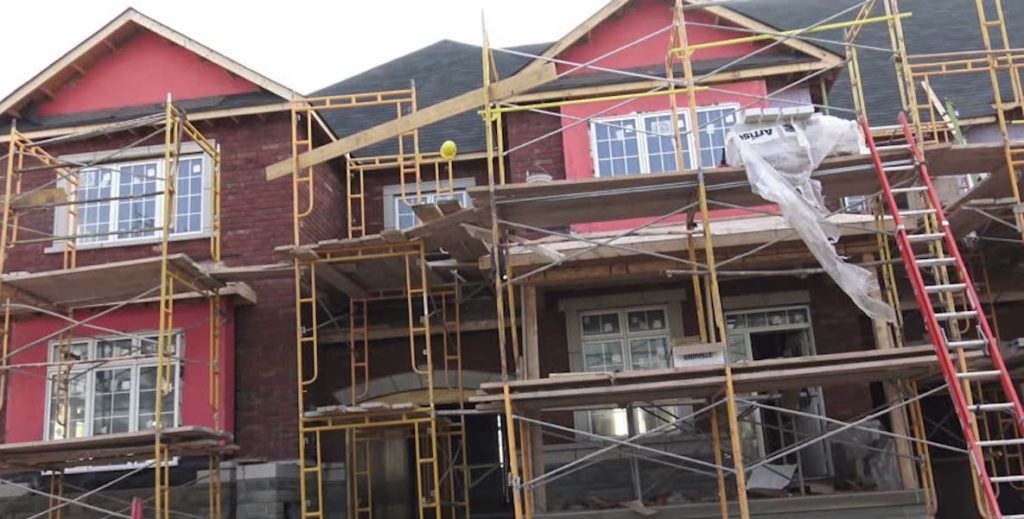As Philadelphia has grown more desirable and its housing prices increase, there is valid concern that the city needs to address housing affordability.
![]()
With the best of intentions, our city’s elected officials have tried to both stoke Philadelphia’s redevelopment and protect the most vulnerable residents from the downsides of it. In the past, City Council tried to incentivize construction by creating a 10-year tax abatement on new construction and substantial rehabilitations, which by many accounts has been an important factor in jumpstarting the city’s development market.
This year, they are contemplating a new piece of legislation that would mandate that any new residential development of 10 units or more include affordable housing on site, or pay for new affordable housing elsewhere by making a payment to the city’s Housing Trust Fund. Participating developers would also be allowed greater leeway in their building’s density, height and floor-to-area ratio to compensate for the bill’s added costs.
Outside of a few zip codes, there is abundant housing for sale for under $200,000. But that means that one would need an income of about $40,000 to make the mortgage payment. Sadly, too few Philadelphians have a steady household income of $40,000 to make this homeownership model work.
This stew of poverty, gentrification and government incentives is the crux of Philadelphia’s problems and the key to its future. We must get it right in order for Philadelphia to prosper, equitably and happily. Unfortunately, I fear we are digging ourselves deeper into a hole of unhelpful legislation and misguided priorities. The new affordable housing bill is at best a band aid pumping a little bit of money into the city’s underfunded Trust Fund; at worst, it is another clumsy piece of legislation that generates unfortunate unintended consequences.
While housing unaffordability is being treated as a problem in Philadelphia, it really should be seen as a symptom of other issues. Our poverty rate means that almost 400,000 people need very low-cost housing. At the same time, Philadelphia’s average property values are the lowest of major cities on the East Coast.
Outside of a few zip codes, there is abundant housing for sale for under $200,000. But that means that one would need an income of about $40,000 to make the mortgage payment. Sadly, too few Philadelphians have a steady household income of $40,000 to make this homeownership model work.
This here is the real problem for Philadelphia, not a lack of housing supply. While a city such as Houston is able to match low property values with high job growth, making it one of the few cities to have a decently-sized middle class, Philadelphia’s job growth rate stood at 1.1 percent from 2010-2015, half the national average and about one-third the 2.8 percent average growth rate of cities. The city’s poverty rate remains higher than it was in 2000; meanwhile mid-range earners have moved to the suburbs, further segregating our city between haves and have-nots.
To address these challenges, the mayor and Council need to develop a comprehensive strategy to create more jobs (not just through Amazon), to boost income levels of those already employed, and to create more pathways for inclusive growth in the city’s economy.
In the meantime, let’s use the tools we already have to provide more affordable housing, and let’s do it with a carrot instead of a stick. Rather than considering a new inclusionary zoning bill, Council should first amend the current 10-year tax abatement. While in the early 2000s it may have been smart policy to boost our real estate market, a 10-year tax abatement on a luxury condo today is a pure giveaway to developers and buyers. It’s also a penalty against anyone trying to sell an old home (math: an old home with $5k in annual taxes will typically sell for at least $50,000 less than one with a 10-year abatement).
I don’t know of any other major city that offers a blanket 10-year tax abatement for all new development. Philly’s abatement should only be offered to developers who are building affordable or workforce housing. This would incentivize developers to build affordable units, and it would allow the city to capture the millions in revenue it is giving away through its current abatement program.
For current homeowners, as I have mentioned in a previous article, we could swap the blunt homestead tax exemption for a credit that reimburses some amount of home improvement each year, creating work in the process.
This stew of poverty, gentrification and government incentives is the crux of Philadelphia’s problems and the key to its future. We must get it right in order for Philadelphia to prosper, equitably and happily.
To put more money in residents’ pockets, the city needs to more aggressively reduce its city wage tax. While it has been reduced to 3.89 percent since its peak of 4.96 percent in 1985, a reduction of 1.07 percent in 32 years is just not fast enough. Philly’s wage tax—which disproportionately bolsters the city’s general fund— is matched only by New York and D.C., and far exceeds the less than 1 percent rate found in cities like Austin and Denver. That’s why Center City District CEO Paul Levy and Brandywine Realty Trust’s Jerry Sweeney have proposed a 15 percent tax increase on commercial real estate instead (something the Chamber of Commerce and Council President Darrell Clarke oppose).
Instead of trying to attack housing as a piecemeal part of the problem, the city needs to align all its incentives and all its legislation around creating more jobs. Rather than creating tax breaks or added taxes, these measures should be evaluated depending on how they shift the incomes of Philadelphians. It’s the only way we’ll really get affordable housing.
Diana Lind, a Citizen board member, is Managing Director of the Penn Fels Policy Research Initiative.

